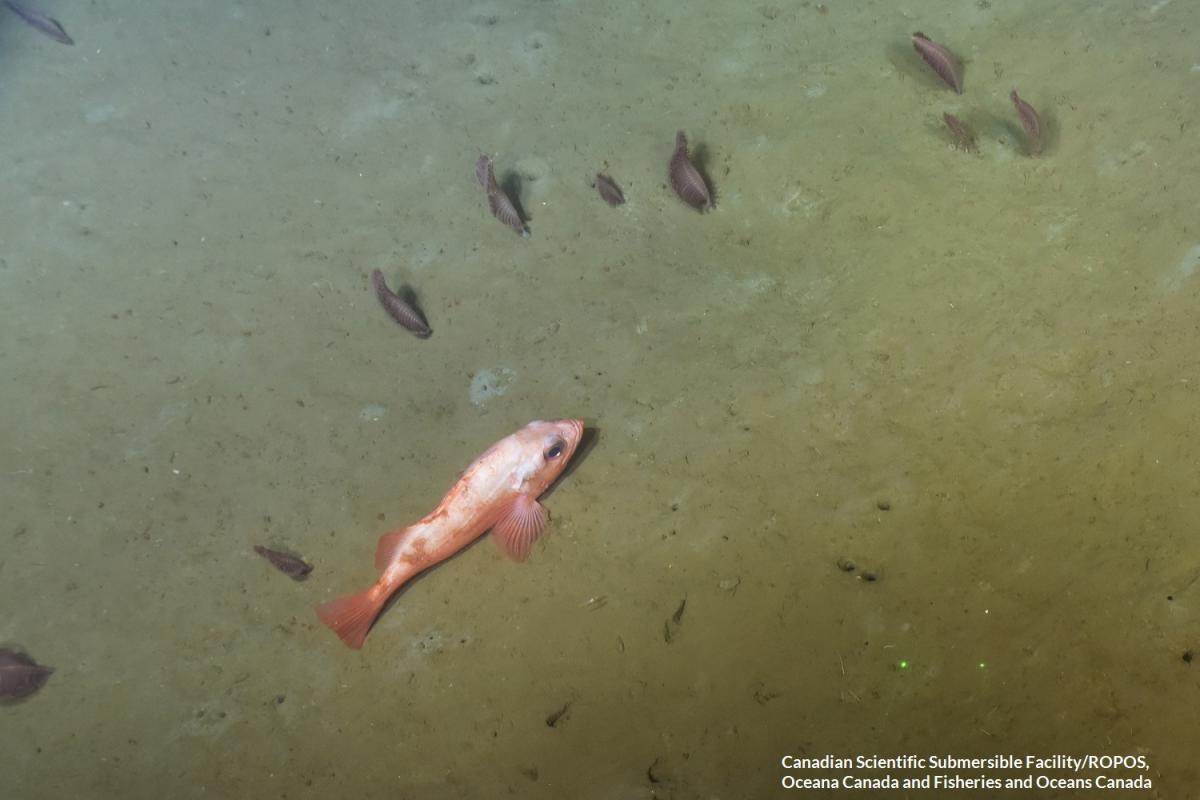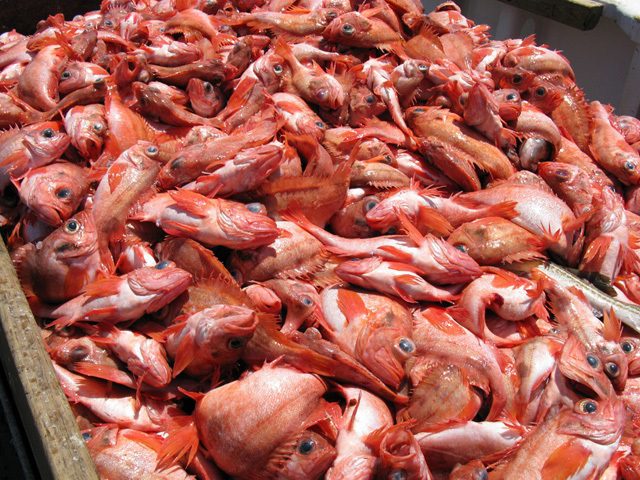May 31, 2018
Redfish, it could be a lucrative fishery but without a plan recovery is at risk
Estimated reading time: 0 minutes
BY: Oceana
Topics: Rebuild Ocean Abundance
You know it’s a redfish when you spot a big-headed and gaping-mouthed fish with large eyes that stand out against its bright orange-red colour. These deep-water fish live a long time, reaching between 45 to 65 years old. They become sexually mature very late, and abundant generations are only observed every 5 to 12 years.
Decades ago, this fish population thrived, as did the coastal communities that depended on them. Redfish was once among the largest groundfish fisheries in Atlantic Canada. Overfishing caused its collapse in the 1990s along with other groundfish populations, altering the ocean ecosystem and devastating the people who relied on them.
Today, we are at a turning point. Redfish stocks in the Gulf of St. Lawrence have recently shown strong signs of recovery. We have a real opportunity to plan for a large, sustainable fishery that will have strong social and economic benefits to the region. However, the government seems poised to move ahead without long-term rules in place to help the fishery return to abundance. To ensure we realize this comeback story, this fishery needs a plan to help it develop and grow.

Will there be a plan for redfish?
In April 2017, the government committed to a rebuilding plan for redfish by the end of June 2018. They have not delivered on their commitment.
A planning process for redfish recovery failed after 18 months. Committee members from Fisheries and Oceans Canada (DFO), indigenous groups, and industry, developed five long-term management options, each of which included a science-based harvest control rule to ensure catch levels resulted in a healthy, rebuilt stock. But the process collapsed when new untested harvest advice was tabled by industry and DFO announced it would not be pursuing a rebuilding plan.
Why is a rebuilding plan important?
Internationally, we’ve seen how rebuilding plans help depleted fish populations recover. A rebuilding plan guides the fish population’s return to sustainable levels while mitigating overfishing, bycatch and habitat destruction. There are a lot of details that go into a good rebuilding plan. At a minimum they should be legally binding, developed and implemented in consultation with right-holders and stakeholders and set objectives, management measures as well as evaluation and monitoring processes.
Unfortunately, in Canada when a fish population is in decline, the government is not mandated to create a rebuilding plan. The result? Decades after the collapse of redfish, we’re still without a plan to support its recovery. Other leading fishing nations, like the United States as well countries in the European Union, legally mandate rebuilding plans for species with collapsed populations to keep their fisheries healthy.
Is there a future for redfish?
Yes, but only if there is a complete rebuilding plan.

Redfish stocks in the Gulf of St. Lawrence have recently shown strong signs of recovery, but the stock, made up of two separate species, is complicated to manage and its recovery remains uncertain. There was a large spike in production in 2011-2013, a rare event, and these redfish are now coming close to sexual maturity. Increasing fishing before these juveniles reach sexual maturity threatens the future growth of the population.
The fishery has potential to produce large, high-value fillets for seafood markets over the next five years, but if the catch is increased too soon, especially of young fish, without a good management plan in place, the fishery could be dominated by small, low-value redfish destined for the bait industry.
In the wake of the failed management process for redfish, Oceana Canada is calling on the government to maintain fishing quotas for Gulf of St. Lawrence redfish at the current level and to keep its commitment to deliver a rebuilding plan. Read our release here.
Show your support for protecting redfish. Share with friends and family to help get the word out that redfish need a plan.

